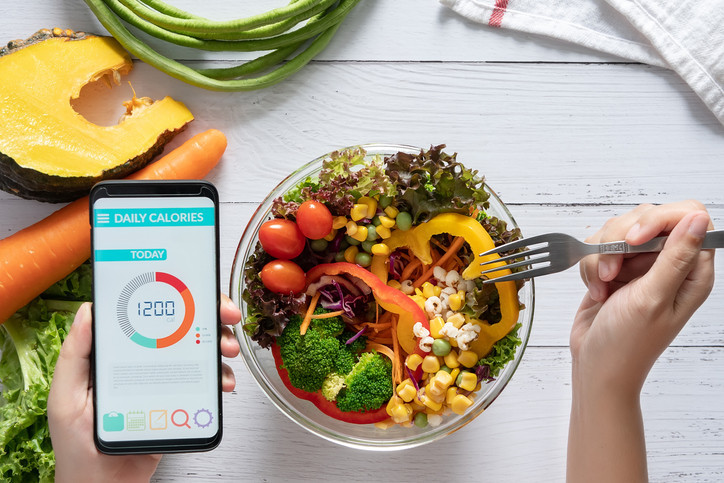In our world of fitness trackers and food apps, many people treat calories like currency—counting every unit consumed and burned. However, as registered dietitians, we understand a fundamental truth: your body’s innate intelligence—its hunger and satiety signals—is far more sophisticated than any algorithm. Emerging 2025 research confirms that food quality trumps calorie quantity when it comes to sustainable health. Let’s explore why nourishment should be your focus, with practical strategies for implementation.
The Calorie-Counting Conundrum: Myths Versus Reality
While calorie tracking can raise initial awareness, it often leads to oversimplified conclusions. Here’s what the latest evidence reveals:
- Myth: All calories are metabolically equal.
- Reality: Whole foods require more energy to digest and enhance satiety through fiber and nutrients. Ultra-processed foods (UPFs) disrupt appetite regulation. A 2025 systematic review demonstrated that UPF consumption increases ghrelin (the hunger hormone) by 14%, promoting overconsumption (Nature, 2025).
- Myth: “Calories in, calories out” guarantees long-term weight management.
- Reality: This model fails approximately 66% of individuals, who typically regain lost weight. UPFs impair insulin sensitivity and metabolic health. Prioritizing whole foods over processed options is associated with a 28% reduction in obesity incidence (PMC, 2025).
- Myth: Low-calorie labels signify healthfulness.
- Reality: Many low-calorie UPFs increase inflammatory markers by 25%. Whole foods support anti-inflammatory pathways and a healthy gut microbiome, crucial for overall wellness (Cell, 2025).
- Myth: Apps provide complete nutritional insight.
- Reality: Digital trackers cannot account for individual variations in gut microbiota and metabolism, with potential errors up to 20%. Use them as short-term educational tools, not long-term crutches (Everyday Health, 2025).
- Myth: Achieving calorie targets requires eliminating enjoyable foods.
- Reality: Strategic substitutions (e.g., nuts for chips) prolong satiety. Sustainable nutrition embraces flexibility and the pleasure of eating (Yahoo Health, 2025).
The Science of Nourishment: 2025 Evidence
Metabolic responses vary significantly based on food source, even with identical calorie intake. Consider these findings:
| Study (Year) | Methodology | Key Outcomes | Clinical Relevance |
| Nature Medicine (2025) | 20 adults: UPFs vs. whole foods (isocaloric, 4 weeks) | UPF group: +0.9 kg weight; Whole food group: -0.6 kg; Hunger +14% with UPFs | Whole foods improved glycemic control by 22% and supported gut microbiome diversity. |
| Cell Metabolism (2025) | 100 men: UPF diet (isocaloric, 8 weeks) | Cardiovascular risk markers worsened; sperm quality declined by 12%; increased adiposity | Highlights UPF impact on reproductive health and metabolic parameters beyond weight. |
| PMC Review (2025) | 500 participants: UPF→whole food swap (6 months) | BMI reduced by 1.2 points; blood lipids decreased by 15% | 28% lower obesity probability; increased daily energy expenditure. |
| Wiley Journal (2024/2025) | Ad libitum UPF vs. non-UPF diet comparison | UPFs led to +500 kcal daily intake and weight gain | Confirms UPFs disrupt satiety mechanisms, promoting passive overconsumption. |
The thermic effect of whole foods is 15-25% higher than UPFs, and their fiber content promotes greater satiety and stable energy.
Global Wisdom: Nutritional Traditions Supporting Longevity
Populations with notable health longevity prioritize food quality instinctively:
- Japan: The Art of Balance
- Dietary Pattern: Fish, seaweed, fermented soy, vegetables; practice of hara hachi bu (eating until 80% full).
- 2025 Data: Obesity rate: 3.5-4.8%; life expectancy exceeds 84 years; centenarian population approaches 100,000. This dietary pattern is linked to an 18-22% reduction in all-cause mortality (BBC; Kikkoman, 2025).
- Practical Tip: Begin meals with a vegetable-based soup to enhance microbiome diversity and support metabolic health.
- United Arab Emirates: Embracing Heritage Foods
- Dietary Pattern: Dates, freekeh (ancient grain), legumes, fish—akin to a traditional Mediterranean diet.
- 2025 Data: The National Nutrition Strategy 2030 addresses diabetes (affecting ~1 in 10 adults) by promoting traditional foods, associated with a 15% risk reduction and improved cardiometabolic markers (MoHAP, 2025).
- Practical Tip: Pair hummus with vegetable sticks for a fiber-rich snack that stabilizes blood glucose.
- Nordic Nations: The Local Bounty
- Dietary Pattern: Berries, rye, cruciferous vegetables, fatty fish (New Nordic Diet principles).
- 2025 Data: Adherence to this pattern reduces chronic disease risk by 20%, lowers blood pressure by ~5 mmHg, and improves lipid profiles (PubMed, 2025). Weight management outcomes are three times more effective than with standard calorie-restricted diets.
- Practical Tip: Incorporate a berry-based smoothie for a breakfast rich in antioxidants and anti-inflammatory compounds.
Cultivating Food Awareness: Actionable Strategies
Move beyond numbers with these practices:
- Construct Nourishing Plates: Visually divide your plate: 50% colorful vegetables/fruits, 25% quality protein (legumes, fish), 25% whole-food carbohydrates (oats, quinoa). Aim for diversity—30 different plants weekly optimizes gut microbiome health.
- Practice Mindful Eating: Dedicate five minutes to focused eating without distraction. A 2025 study linked this practice to a 30% reduction in stress-related eating and improved weight regulation (Frontiers, 2025).
- Select Foods with Intent: Choose ingredients for their nutritional benefits—walnuts for omega-3 fatty acids, spinach for iron and magnesium. This shifts focus from restriction to empowerment.
- Transition from Tracking: Use apps for a one-week audit to identify patterns, then gradually rely on internal hunger and fullness cues.
Conclusion
As of November 2025, the evidence is unequivocal: a diet centered on whole, nutrient-dense foods fosters metabolic resilience, reduces inflammation, and supports longevity. Your body’s inherent wisdom is the most valuable tool for health. Move beyond calorie counting and embrace the power of nourishment. Start with one change—perhaps a vegetable-centric lunch—and observe how your body responds.
Key References (2024-2025)
- Nature Medicine & Cell Metabolism: Studies on Ultra-Processed Foods.
- Japanese Longevity Data: BBC & Kikkoman Reports.
- UAE National Nutrition Strategy 2030: MoHAP Publications.
- Nordic Diet Research: PubMed Systematic Review.
- Mindful Eating Research: Frontiers in Psychology.
- App Limitations: Everyday Health & Economic Times Analyses.



